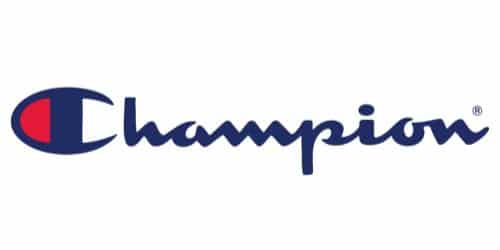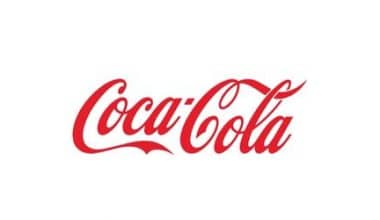The Champion is currently in a position that is also quite recent. The company stands for the pinnacle of streetwear hype. The Champion logo has recently been brought back to life, which has made it possible for it to show up in new cultural settings. This may come as somewhat of a surprise, given its origins. But “how did we get there”? is an important question to consider.
Of course, as the business puts it, quality and authenticity come first. After all, Champion began its existence as a seller of athletic apparel. But because it has been around for so long, it has undergone numerous visual changes. The Champion logo itself has evolved significantly from its original form. So in this article, we will be more into the history of the logo, its evolution, the history of the company, the font, color, etc.
History of the Champion Company
The popularity of Champion may not be among the top 10 in America, but that is about to change. With time, its fame faded, but now that social media platforms feature famous people wearing the brand, more and more people are inclined to purchase the goods. Due to this interest, Champion’s Instagram following increased from 200,000 in 2016 to 5.8 million at present. However, showing support for the company extends beyond simply wearing its products; one step in that direction is becoming knowledgeable about it, including how the Champion logo came to be. So now is your chance to learn more about the company’s history, the design of its logo, and how it came to be recognized as a trusted name in the industry.
First Days
The story of Champion is somewhat all-American. It’s a fairly typical journey, even by the standards of authentic American brands.
The plot begins in the distant past, in 1919. Two brothers team up for a business endeavor somewhere in Rochester, New York. William and Abraham Feinbloom hatch a plan to start a knitwear company. Yes, the company began by producing knitwear, and it wasn’t exactly having trouble.
The Knickerbocker Knitting Company was the original name of the company. The logo is currently quite simple in terms of design. On the front of many shirts is a big “C.” The Champion logo is now a distinguishing feature of vintage athletic wear. In fact, a lot of college athletic branding is influenced by this unique appearance.
The Champion logo establishes an immediate association with ongoing innovation. In fact, the company is still credited with creating the contemporary hoodie.
With that kind of early cachet, it is therefore challenging to go unnoticed. The University of Michigan was the first institution to adopt the Champion logo. The school’s mascot, the Wolverines, was ecstatic to see what they did. At this point, it’s hard to ignore the fact that they keep adding to the category of athletic wear. Everything had the Champion logo on it, including the aforementioned hoody, as well as sweatshirts and sweatpants.
The Success Story
Thus, this is the point at which Champion’s business really starts to take off. They go on to brand several university programs with their recognizable “big C” logo, which is visible everywhere on fields and courts.
Big C-Logo Sweatshirt from Champion
The inspiration for the contemporary sweatshirt is diverse. None, though, have the same air of authority as those with the famous “Big C” logo from Champion.
This sweatshirt has all the traits and strategies that have made this company so well-known around the world. The idea of horizontal stitching was a development in earlier times. As a result, vintage sweatshirts from the era are becoming more durable. Somehow, it does this without taking away from the garment’s pliability and versatility.
Here, its most modern rendition sees some changes. The body is in heavyweight fleece, as normal, but comes with a more contemporary stitching finish. Double-needle construction, as the brand calls it, is the order of the day. As with advancements in the label’s past, double-needle stitching makes for a more durable sweatshirt.
And, of course, the visual finisher comes in the form of an oversize Champion logo. The Big C sits prominently across the chest. Meanwhile, a chain-stitch Champion logo patch boasts a tad bit more color on the left sleeve.
Champion: Finding Utility
The fact that Champion was in the athleticwear business was interesting in and of itself. Sure, it’s a fashion niche that suffers early on from a lack of innovation – which makes for a nice window of opportunity.
But, beyond that, it means that more and more is expected of Champion. Their work needs to protect customers in a way that makes purchasing this particular brand worthwhile. After all, Champion makes it clear that the goal is to develop into an absolute necessity for anyone who is in contact with the outside world.
The brand continues to make advances in that regard as the years go by. Between the 1930s and 1940s, the Champion logo appeared on things like wool underwear – a prototype of the sweatshirt. This underwear was intriguing because the label intends to prove To call this a success is an understatement. Eventually, even the US Military Academy decides to purchase a bunch of them. In fact, they are the perfect thing to do with running drills and PE classes when it’s raining.
Additionally, there are some internal changes that the brand goes through. Champion Knitting Mills, Inc. is the name they chose. Their approach tends to be more all-encompassing. They have to be able to decide if clothing can be worn by most people while still keeping a protective profile.
Champion T-shirt Logo
The Feinbloom brothers established the business that is today known as Champion in Rochester, New York, in 1919. The company was first known as the Knickerbocker Knitting Company. The Michigan Wolverines’ contract, which called for the brand to supply the teams with uniforms, was among the first to be a success.
The name Champion Knitting Mills, Inc. was chosen after around 15 years. Sweatshirts were added to the company’s lineup at that time. At that point, students at the United States Military Academy started wearing the brand’s designed and produced clothing as part of their uniform.
Another significant agreement was made at the beginning of the 1990s; for roughly ten years, the brand was to provide uniforms for every NBA team. In addition, it produced uniforms for a number of NFL teams in the 1980s and 1990s. Champion has a reputation for working with several prestigious colleges. The business donated the outfits for the Summer Olympics to the US Olympic basketball team in 1992.
A lot of well-known teams and athletes wear jerseys with the Champion logo, from the Premier League to Wigan Athletic Football Club. The national basketball team of Greece, the national football team of Wales, and the professional basketball club MIA Cantù of Italy are among the notable teams with which it works.
Although the brand doesn’t have a large network of locations, many significant sportswear fashion retail organizations carry its products. Additionally, Champion has been offering reduced costs recently while selling through smaller sportswear retailers.
It’s one of those designs that enable Original Game aficionados to quickly reflect that old-school touches abound on the garment itself. The style of the cuffs on the sleeves and the collar bring to mind classic college sportswear from decades ago. That also appears to be the goal of this design.
Changing it up
This t-shirt is a vintage item from the company’s collection. On the left chest, it has the Champion logo script. As usual, a similar patch-style emblem is positioned on the left sleeve. The minor contrast between the Oxford Grey color and the two-color tape detail is present here.
So, there is a question that remains unanswered in this situation. Where did we come from? How did the present-day Champion logo come to be? Well, when the Champion Knitwear Company was young, the brand used a certain design for a long time. A running man crosses a finish line on the stitched label. The Champion logo has been reinterpreted yet again to flirt with branding.
On the other hand, the modern image first appeared in the 1940s and 1950s. On the now-famous C patch, the Champion emblem emerges in a combination of red and blue. It first appears with a white background when it first appears. It only stands out more as a result of this. In other words, the Champion logo was a little bit of a branding fantasy realized.
Then, as we move into the 1950s, Champion continues to adapt its visual narrative. The C-patch initially appears in its contemporary form. It goes along with the standard sweatshirt chest branding of the Champion logo. Why show the brand in two formats? It may seem a bit excessive to some.
Although this is a valid concern, Champion cleverly and subtly goes beyond it. Every Champion sweatshirt has a patch with the logo on the left sleeve, where it stays for years. The Champion gains from the consistent placement decision to always wear it on the left sleeve. Over time, the uniformity contributes to the brand’s distinctive appearance.
Current Hype
The Champion logo, as we all know, goes on to become extremely well-known. Champion is currently occupying the hilltops as a label, whether it’s for comfort or stylish reasons. This is in large part due to a contemporary renaissance that has seen the supplier of athletic gear gain some power.
It frequently looks accidental or lucky to find this kind of influence and popularity in the streetwear industry like Champion did. There is a valid argument there, of course. But it’s important to keep in mind that the Champion emblem originally served to signify high-quality clothing.
Champion sweatpants with a Logo Across the Design
This is one of the best illustrations of the current fanfare around Champion. The advantages of a streetwear culture that develops in waves are attested to by the Champion emblem. Champion is now experiencing success.
The reverse weave construction of these sweatpants features recognizable features like a cotton frame and heavyweight fabric.
Champion Hoodie by Vetements
Champion accepts the collaborative services of several reputable names in the business. But their greatest achievement may be getting the attention of Vetements. This sweatshirt continues to draw interest online and fetch high asking prices. The iconic Big C Champion insignia combines with Vetements’ oversized design. One of the most anticipated recent collaborations is the one between Vetements and Champion.
The Evolution of the Logo
The brand itself identifies its specialty as “athleisure.” Given that the company’s history dates back more than a century, it makes sense that it has a lot to be proud of. It was a pioneer in the Reverse Weave technique and helped make the hoodie and sweatshirt popular as sportswear.
1919 — 1960
Together with their father, Simon Feinbloom, two brothers named Abraham and William Feinbloom founded the Knickerbocker Knitting Company in 1919. It was a wholesale clothing company, but Brag says that when they weren’t happy with the quality of American football sportswear, they turned their attention to collegiate sportswear. They developed the sweatshirt as an undergarment for outdoor workers to wear in the winter, so they started producing high-quality sweatshirts and sweatpants and selling them at a reasonable price. The business sponsored its first team in 1926 when it teamed up with Wentworth Military Academy and provided them with school clothes.
At the time, there was no set uniform for college sports, but Knickerbocker Knitting Mills was about to change that. As a result, the company teamed up with Moe Shop in 1934 to create collegiate clothing that included sweatshirts and t-shirts. Since it was useful for players to stay warm during practice and in between games, the brothers were creative enough to invent the hooded sweatshirt at this time, which became known as the “hoodie.” The Michigan Wolverines were the first college team to be clothed by Knickerbocker Knitting Company after Michigan University quickly caught wind of the hoodie and decided they could use it. The Feinbloom brothers decided that “Champion Knitting Mills, Inc.” was a more appropriate name for their business because they were now concentrating their efforts on making sportswear.
A huge block “C” in a variety of typefaces can be seen on some of the company’s initial goods. However, it seems that this wasn’t the organization’s official logo. In the 1940s and 1950s, the first official logotype is known to have been in use. On the neck labels of the products, there was a symbol with a running man and a finish line.
1960 — Today
The original Champion logo underwent changes over time. The label now bore the name “Champion Knitwear Company.”
In the 1970s and continuing into the late 1980s, a new era in the history of the emblem began. The corporate name appeared in red and blue on a white backdrop during this time, and the emblem underwent a number of changes before starting to resemble what it does today. The writing was initially presented in a straightforward sans-serif typeface. Later on, the recognizable cursive emblem with the recognizable “C” was created.
It’s interesting to note that although you can still see vintage products from the 1950s with the distinctive vertical bar on the “C,” it was eventually removed. Therefore, the “C” doesn’t have the bar in athletic goods catalogs from 1953 and 1954, whereas the firm name is given in plain form in the 1957 catalog. Based on these facts, it’s likely that even though the wordmark was made a long time ago, it didn’t become the company’s official logo for at least a few decades.
The “C”Logo Past
Even while it’s difficult to pinpoint the precise day, week, or even year that the recognizable “C” made its appearance, we can at least pinpoint the decade. In the 1950s, sweatshirts with the letter “C” stitched on the left sleeve became popular. The letter was dark blue, as was the thick vertical bar in the center, and the interior was dark red. The thread used to attach the logo usually leaves a white outline around it.
The placement was exceedingly precise; the symbol was visible on the shirt’s left sleeve. We can say with certainty that the “C” is one of the most recognizable marks in the industry because of both its placement and shape.
Which Font is used in the Champion Logo
The letters outside of the famous “C” in “Champion” may remind many people of an existing typeface. It looks like Monument. The font used for the Champion logo, on the other hand, was made just for the sports company.
The typography used for all branding is known as the “KNOCKOUT” font, according to the Champion Teamwear style manual. However, this is not apparent in the Champion logo’s writing.
Champion Logo Colors
Because the Champion logo is so well-known, many different versions of it have been made over the past year. The athletic-wear company has created a variety of different color schemes for its logo to match its different product lines.
For instance, there is a blue champion logo that is well-known to many people. However, due to its frequent use on a vivid red background, it is sometimes referred to as the “red Champion logo.”
A black and white version of the Champion emblem can also be seen on select items and in other branding materials. The official Champion logo, on the other hand, is a dark blue word mark that frequently has a white background.
The iconic “C”‘s central line is drawn in the same shade of blue as the wordmark, with white on the right side and red fill on the left.
Who Designed the Champion Logo
In 1919, the Knickerbocker Knitting Company was the precursor to Champion. The company quickly signed a deal with the Michigan Wolverines to make the team’s uniforms. The brand’s entry into the world of athletic clothing began with this.
In the 1930s, Champion adopted the moniker “Champion Knitting Mills” and started creating goods for the US Military Academy to be used in physical education lessons and training drills.
The Sara Lee Corporation bought the business in 1989, and in the 1990s it started making uniforms for every NBA team.
The Champion logo has been seen on the apparel of NBA and NFL teams over the years, and Champion even produced the uniform for the Olympic Basketball Team for the Summer Olympics in 1992.
In 2008, the company started making Premier League uniforms as well!
In recent years, the company has expanded into many new industrial areas. This has given a big boost to both the Champion logo and the company as a whole.
The History of the Champion Logo
1000Logos says that the first version of the Champion logo was used in the 1940s and 1950s. It was shaped like a running man and the finish line, which might be interpreted as a sign of how the corporation believed its premium clothing represented champions. Also, since it was called “Champion,” it made sense to have a logo that looked like a winner. Sweatshirts used to have the running guy and the finish line logo on the neck label, but that has since been altered.
The business was renamed to Champion Knitwear Company in the early 1950s. The recognizable “C” was created, and sweatshirts featured it on the left sleeve. The middle of the letter “C” featured a vertical bar that was the same color as the letter: blue. Red was used to tint the area between the “C”‘s curve and the bar. Using the thread used to secure it to the sleeve, a white outline was created. Even though this well-known symbol went through a few changes that didn’t last, it’s easy to see why people have always thought that the “C” and the vertical bar in the middle have stayed the same. Unbeknownst to many, Champion’s catalogs did not feature the vertical bar in 1952 or 1953, and by 1957, the catalogs just showed the letter “C” as the company’s emblem.
More Detail
To complete the word “Champion,” there was a script lettering “hampion” next to the “C.” The lettering’s typeface was altered, and both the letter’s and background’s colors were red, white, and blue. The “C”‘s” bar and curve were separated by a red space, while the letter and script that followed were written in blue. Typically, the full “champion” was set against a white background. Even today, though, the colors used depend on the color of the clothing; as a result, occasionally the text is white but the red patch is still present. According to Logo Realm, a plain “C” on a black t-shirt is sufficient to make a statement. The emblem can now be seen on more places than just the left sleeve of sweatpants, including the front of hats, the chest of sweatshirts, and the sides of track pants.
What Made the Name Champion to be Popular
After being used by the Michigan Wolverines, the product got the attention of other schools. It became the NCAA’s exclusive provider of uniforms by 1960. Because of its repute, the business was able to provide the majority of the NFL (National Football League) clubs’ uniforms. In the 1990s, Champion outfitted all 27 NBA (National Basketball Association) teams. Even the Olympic basketball competitions in 1990 and 1992 used clothes from this firm. Given their enormous operations, one might question what made them unique enough that sports teams flocked to Champion for their uniforms. Innovation in business is the key.
Champion invented Reverse Weaving in 1934, according to the Champion Store, so that sweatshirts wouldn’t shrink when they were washed a lot. Sports organizations would not have to set aside money every few years to replace the worn-out uniforms, which alone would have saved them money. The business didn’t apply for a patent until 1938, though, and it was approved in 1952. They relaunched it in Europe in 2012. Also, since the Feinbloom brothers wanted to help American football teams, it made sense for them to make uniforms that helped players do better by making them less tired from the heat. Thus, when it changed its name to Champion Products in 1967, the mesh nylon jersey was launched. Because the jerseys are so popular, basketball teams may also wear them.
What font does Champion use for its logo?
All typography for the Champion brand is done in the KNOCKOUT font. From the family, Welter Weight, Junior Cruiser, and Junior Middle fonts are utilized.
Is Champion owned by Nike?
American clothing firm Hanesbrands is the owner and marketer of the clothing brand Champion, which specializes in sportswear.
Can you wear Nike with Jordan?
Any brand can be worn with Jordans, as long as you feel comfortable doing so.
How can you tell if a Champion is real?
Whether it’s a large spell out across the front, a small logo on the chest, or a discreet emblem on the sleeve cuff, the logo can be seen on almost all Champion clothes.
Why is it called champion?
Champion is a translation of the Latin gladiator and warrior term campionem. Rarr! No need to draw your sword, yet a fighter for a cause is also a champion.
What makes a champion in life?
A champion has the guts to try and fail because they understand that failures teach us valuable lessons. A champion uses a competition to learn more about themselves and receive feedback on their physical development.
What was Nike’s original name?
Bill Bowerman, a track & field coach at the University of Oregon, and Phil Knight, a former pupil, established it as Blue Ribbon Sports in 1964.
Summary
The Champion brand emblem has become an important part of the history of symbols for athletic wear. Champion has kept its unique appeal over the years with a logo that speaks to its target market, just like many of the best logos in this category.
The Champion brand mark’s use of color is excellent for inspiring a sense of pride in consumers.
According to color psychology, deep blue also makes you feel strong and reliable, while white makes you feel creative and clean. Red is a great color for a sporting organization since it symbolizes passion.
The rest of the Champion font is rich and flowing, but the bold letter “C” stands out and gets buyers’ attention right away. The majority of the words are written in cursive, sans-serif, and lowercase to help the brand come off as more approachable.
The Champions logo is a superb example of a classic brand icon. Remember to look through our other Logofiles to discover more about related companies.
Related Posts
- Socks Brands: 25 Best Brands For Men And Women
- CHANGE AGENTS: How to Identify Change Agents in any Organization
- Men’s Clothing Business Casual: Best business casual for men (+tips)
- Sales Associate: Job Description, Skills, and Salaries
FAQs
What font is the C in Champion
All typography for the Champion brand is done in the KNOCKOUT font. The series includes three fonts: Welter Weight, Junior Cruiser, and Junior Middle.
Does Nike own Champion?
Champion is a brand of sportswear clothing that is owned by Hanesbrands, an American clothing company based in Winston-Salem, North Carolina.
Is Champion a brand that costs a lot?
Champion is not a brand of high-end clothes. That is not a matter of opinion; it is a matter of fact. Their brand, quality, and prices are not made for the high end market. Even though they’ve recently gotten some attention and teamed up with famous designers, that doesn’t make them a high-end brand.






